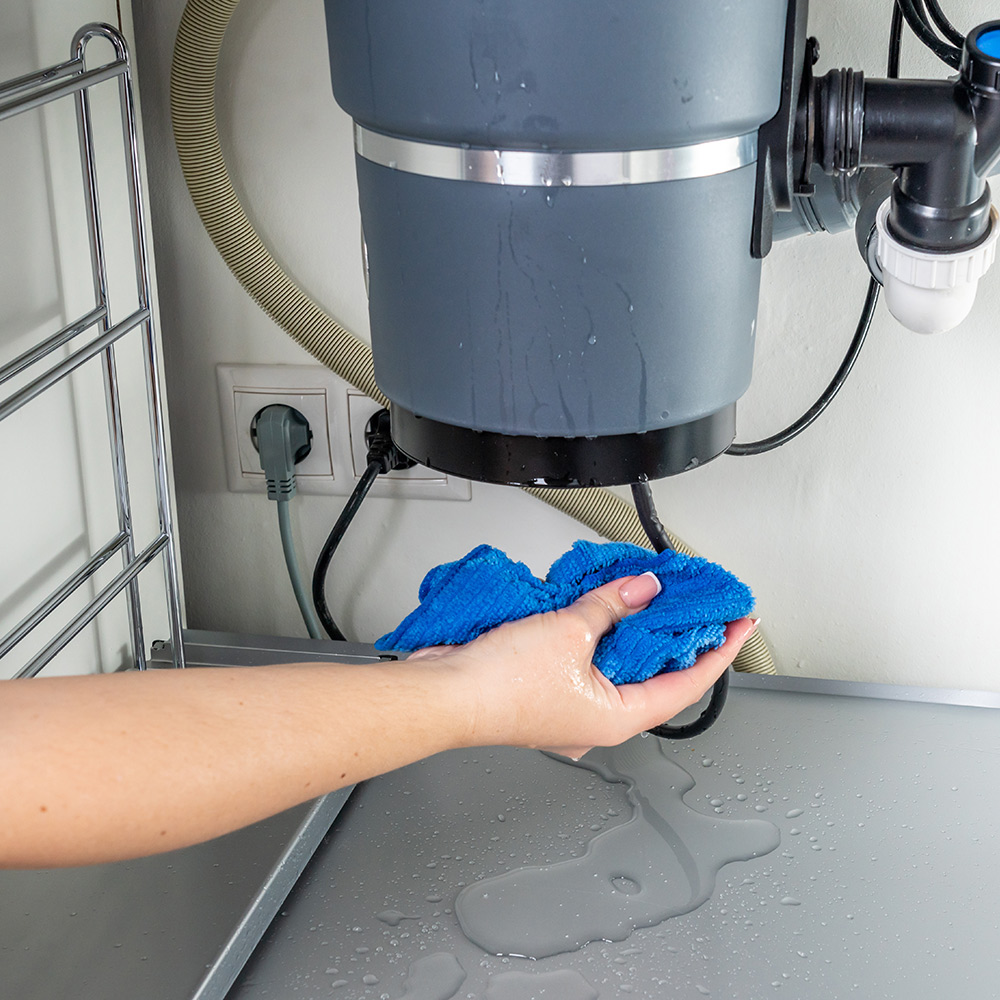Easy-to-Follow Techniques for Repairing a Leaky Garbage Disposal
Easy-to-Follow Techniques for Repairing a Leaky Garbage Disposal
Blog Article
How do you feel about The Handy Guide To Fixing Your Garbage Disposal Leaking?

Garbage disposals are important kitchen area home appliances that help in taking care of food waste effectively. Nevertheless, a leaking garbage disposal can be an aggravating and messy problem to manage. The good news is, lots of leaks can be dealt with quickly with a few basic steps. In this short article, we will certainly talk about just how to take care of a dripping garbage disposal effectively.
Introduction
Waste disposal unit are installed under cooking area sinks and are developed to shred food waste right into smaller sized pieces, enabling it to travel through the plumbing system easily. While these gadgets are generally trustworthy, leakages can take place over time due to deterioration, loose connections, or damage to the device.
Common Reasons For Leaks in Garbage Disposals
Worn Seals and Gaskets
Seals and gaskets play an essential role in preventing water from dripping out of the waste disposal unit. Gradually, these parts can degrade, resulting in leaks around the disposal device.
Loose Connections
The connections in between the garbage disposal and the plumbing system can come to be loose in time, causing water to leakage out during procedure.
Fractures or Openings in the Disposal System
Physical damages to the waste disposal unit, such as splits or holes in the real estate, can also lead to leaks.
Identifying the Resource of the Leakage
Prior to trying to take care of a dripping garbage disposal, it is vital to recognize the source of the leak. This can typically be done via aesthetic assessment or by performing simple tests.
Visual Evaluation
Examine the waste disposal unit device meticulously for any type of signs of water leak. Pay close attention to locations around seals, gaskets, and connection factors.
Evaluating for Leakages
One method to evaluate for leakages is by running water with the disposal unit and checking for any type of noticeable indications of leakage.
Tools and Materials Needed for Dealing With a Leaking Garbage Disposal
Before beginning the fixing process, gather the needed devices and products, consisting of a screwdriver, adjustable wrench, plumber's putty, replacement seals or gaskets, and epoxy or patching product for fixing cracks or holes.
Step-by-Step Guide to Dealing With a Dripping Waste Disposal Unit
Switch off the Power
Prior to attempting any type of repair work, make certain that the power to the garbage disposal device is switched off to avoid the danger of electric shock.
Find the Leak
Recognize the specific place of the leakage and identify the reason.
Tighten up Connections
Utilize a wrench to tighten up any loosened links in between the disposal unit and the plumbing system.
Replace Seals or Gaskets
If the leakage is because of worn seals or gaskets, remove the old parts and replace them with brand-new ones.
Patching Splits or Openings
For splits or holes in the disposal system, use epoxy or an ideal patching material to secure the broken location.
Checking the Waste Disposal Unit After Fixing
As soon as the repair service is complete, examine the waste disposal unit by running water through it to guarantee that the leak has actually been dealt with.
Preventive Maintenance Tips to Prevent Future Leakages
To prevent future leaks, it is important to do normal maintenance on your garbage disposal. This consists of maintaining it tidy, staying clear of placing non-food products or hard objects down the disposal, and periodically checking for leaks or various other problems.
Final thought
In conclusion, repairing a leaking garbage disposal is a relatively uncomplicated procedure that can be finished with fundamental tools and products. By adhering to the steps described in this post and exercising preventive maintenance, you can keep your garbage disposal in good working problem and stay clear of pricey repairs in the future.
HERE’S HOW TO FIX YOUR GARBAGE DISPOSAL
WHAT TO DO IF SOMETHING IS STUCK IN YOUR GARBAGE DISPOSAL
If the impeller won’t turn, there’s probably something stuck in the disposal. It could be a steak bone or peach pit, although plumbers report pulling all sorts of inappropriate objects out of disposals, such as bottle caps or aluminum foil. Make sure power to the disposal is off, and look inside to see if you can see the source of the jam.
Never stick your fingers in a disposal. Pull out anything you see with tongs or pliers.
If the disposal still won’t work, it may be time to call a plumber or consider buying a new disposal. GEM Plumbing & Heating is here for all of your garbage disposal needs.
WHAT TO DO IF YOUR GARBAGE DISPOSAL DRAIN IS CLOGGED
Take everything out from underneath your sink and put a bucket or other container under your disposal to catch any water that drains out. Disconnect your disposal from the power supply. If it’s plugged into a wall outlet, unplug it. If it’s hardwired into an electrical box, go to the electrical panel and turn off the breaker for the disposal. Pour ¼ cup of baking soda into the drain, followed by ½ cup of white vinegar. Give the solution a few minutes to fizz and do its work. Look into the disposal with a flashlight to see if you can see an object that might be causing the clog. If you see it, remove it using tongs or pliers. MORE TIPS ON DEALING WITH A CLOGGED GARBAGE DISPOSAL
Never use drain cleaner in a garbage disposal. It can damage the plastic parts inside the disposal. You can also be splashed with the caustic liquid while working to clear the clog. Beware! Never stick your fingers into a garbage disposal. Trust us — not a good idea. In many instances, your dishwasher drains through your garbage disposal. This allows the disposal to grind any large food particles that may be drained out of your dishwasher. There are some jurisdictions, however, where the plumbing code prohibits such a connection. WHAT TO DO WHEN YOUR DISHWASHER DRAINS THROUGH THE DISPOSAL
Run some water in the sink so your plunger has at least a ½-inch of water to create a seal and plunge vigorously up and down several times. You may need to repeat this several times. Run hot water down the drain to clear any residue that remains.

I recently found that blog posting on Why Is when browsing on the search engines. Sharing is caring. Helping others is fun. Thanks a lot for your time. Please check our website back soon.
Call Today Report this page